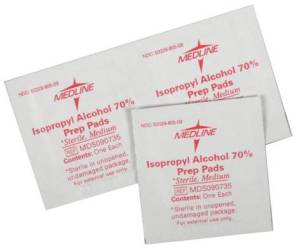 Your triage nurse complains of numerous patients in the waiting room complaining of nausea, retching, and emesis. They ask you “why can’t we have an antiemetic on hand in triage?” Turns out they might have had an effective antiemetic on hand, or rather in their scrub pocket the entire time. They just didn’t know about it yet.
Your triage nurse complains of numerous patients in the waiting room complaining of nausea, retching, and emesis. They ask you “why can’t we have an antiemetic on hand in triage?” Turns out they might have had an effective antiemetic on hand, or rather in their scrub pocket the entire time. They just didn’t know about it yet.
Background About Vomiting
Nausea and vomiting are two of the most common presenting symptoms in the emergency department (ED) and has led to ondansetron being the most documented medication given to ED patients in the United States.1 Emetogenic events transpire from neurotransmission activation of the medulla due to feedback received from the chemoreceptor trigger zone, vagal afferent nerves, cerebral cortex, and/or vestibular apparatus.1,2 Current antiemetic treatment most commonly ordered is ondansetron, promethazine, metoclopramide, and prochlorperazine.3 Droperidol is sorely missed in the United States, as it has been shown to be one of the most efficacious antiemetic treatments in the ED, if you are okay with the akathisia apects.4 Despite ondansetron’s incredibly common use in the ED, the onset of effect (50% decrease in nausea severity) for the intravenous formulation is about 30 minutes.5,6 Futhermore, ondansetron was recently compared to placebo in a randomized controlled trial of ED patients and found no difference in nausea severity at 30 minutes.7

Trick of the Trade: Isopropyl Alcohol Vapor Inhalation
Initially brought to the medical community’s attention as a South American folk remedy for nausea, the use of isopropyl alcohol has been well studied in the anesthesia literature and shown positive results in decreasing nausea severity by more than 50% in a much faster time than ondansetron, promethazine, and placebo.5,6,8,9 The majority of these studies found less than 10 minutes were needed for this reduction and there was no statistical difference in rescue therapy requirements. Additionally, an observational study found that transporters were able to provide relief in 84% of their patients that experienced nausea during transit with isopropyl alcohol.10 Even a 2012 Cochrane Review concluded that isopropyl alcohol was effective in reducing the need for rescue antiemetics.11 The only pediatric study available had positive results, but concluded that the treatment was too noxious for this patient population.12
Newest study
Most recently a randomized, double-blinded, placebo-controlled trial by Beadle et al. was performed in an ED population complaining of nausea and/or emesis comparing saline versus isopropyl alcohol inhalation.13 This study found that isopropyl alcohol provided significantly greater relief from nausea in the first 10 minutes of aromatherapy compared to saline (p <0.001) and is the first to look specifically at the ED patient population.

The mechanism of action is not certain, but theorized that isopropyl alcohol influences neurotransmission at several sites that activate the chemoreceptor trigger zone.9
Simple Technique
Three nasal inhalations every 15 minutes and may repeat twice

Instruct the patient to inhale through their nose and out their mouth
Conclusion
- Isopropyl alcohol has no reported adverse reactions in the adult population as an inhaled vapor
- Extremely cheap and readily available
- Potential for additional time to diagnose and treat underlying cause prior to using additional antiemetic therapy and/or give the antiemetic time to work
- Potential to increase patient satisfaction with “immediate” treatment
Image used with written permission from Medline Industries, Inc.
Author information
The post Trick of the Trade: Isopropyl Alcohol Vapor Inhalation for Nausea and Vomiting appeared first on ALiEM.

